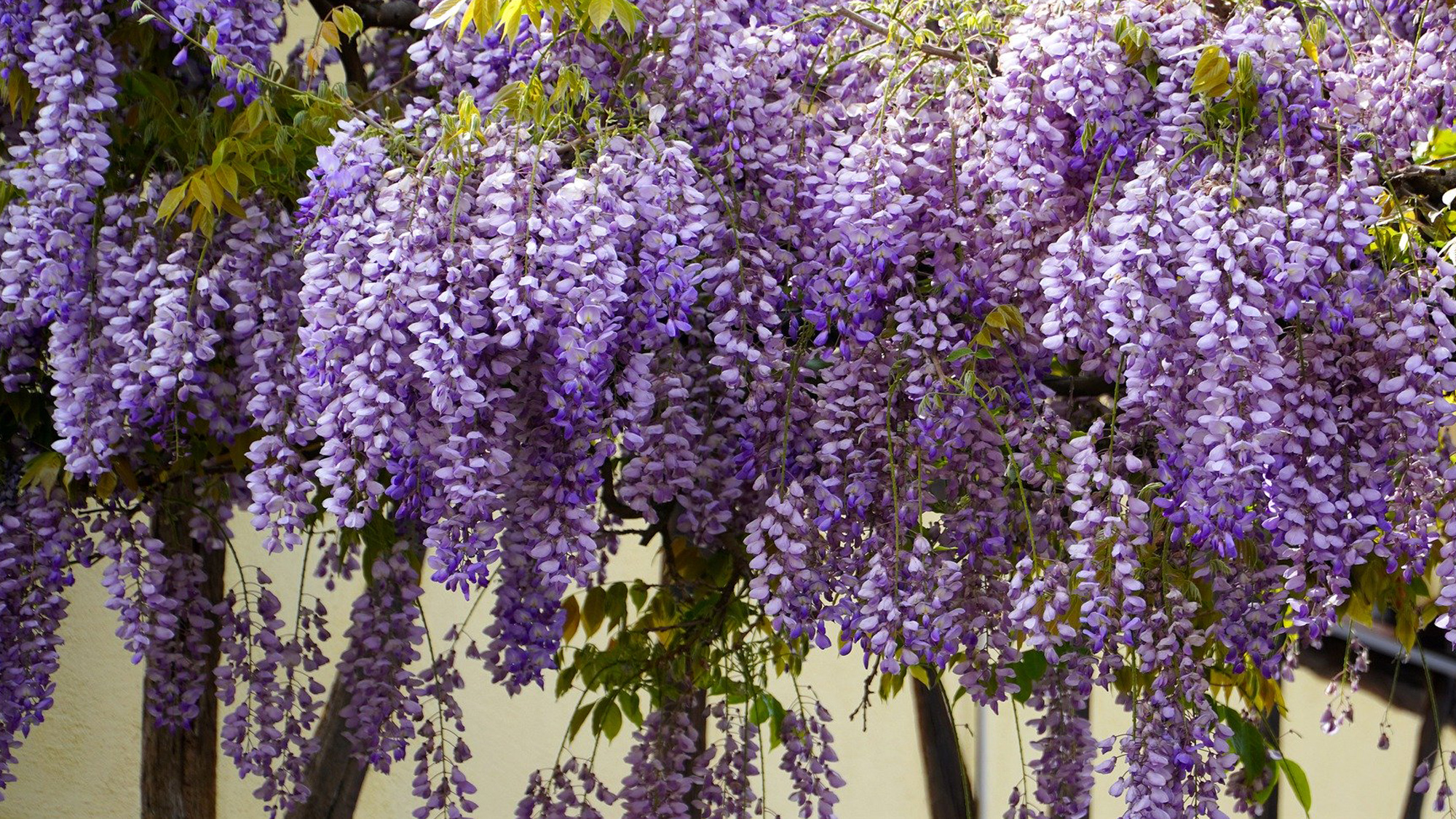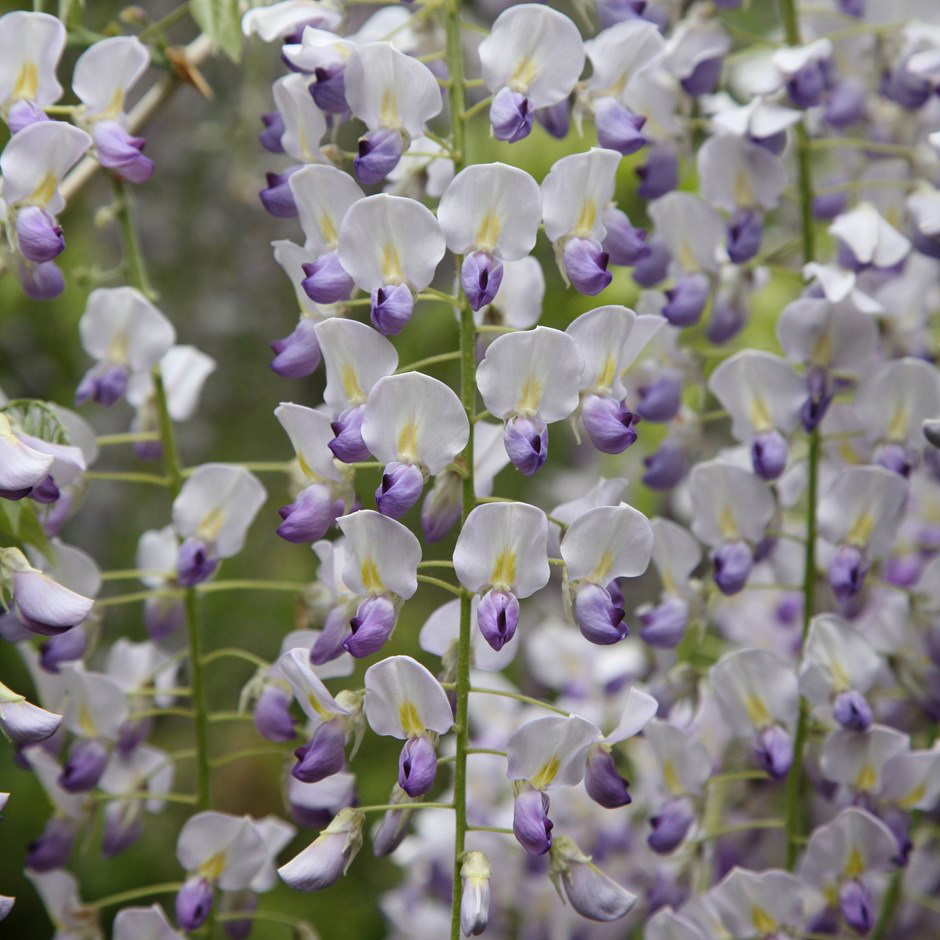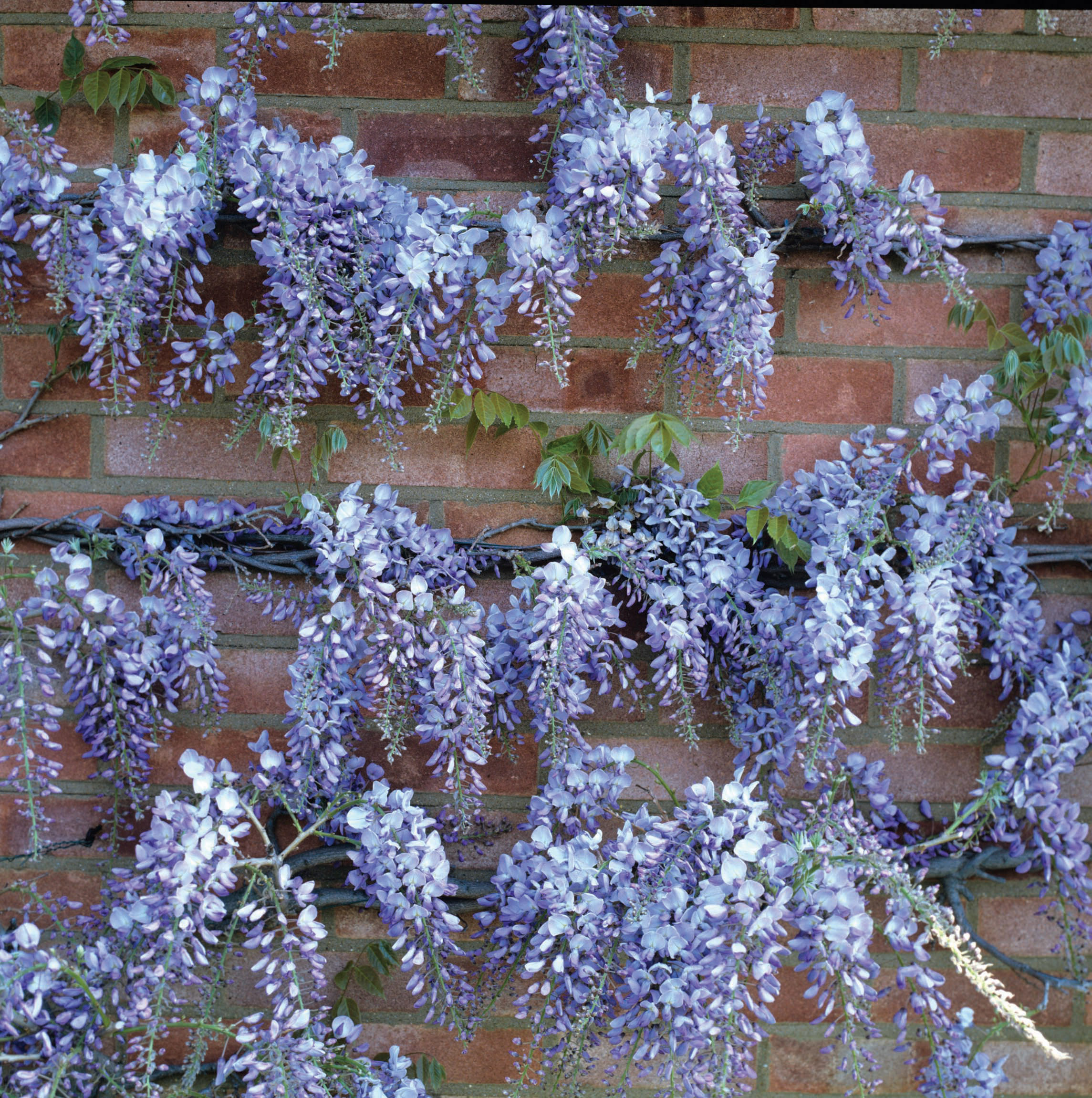How to grow wisteria: follow our top tips for a showstopping display
Learn how to grow wisteria, and whether it’s in a traditional cottage garden or a more contemporary space, it’s guaranteed to turn heads


If you're thinking ahead to next year's spring flowers and want to know how to grow wisteria, we've got all the advice you'll need in our handy guide. In May and June, there are few more gorgeous sights than a wisteria in full flower. Available in white or pinky-blue as well as the more usual mauve/lilac, they not only look fantastic scaling a house wall or scrambling over a pergola, they have a lovely, heady fragrance too. And once you have a wisteria that’s happy, it will put on its spectacular display every year for decades to come.
You used to be only able to buy one here in the UK – the common Chinese wisteria, W. sinensis. But these days there’s quite a wide choice of different varieties, and they all have one thing in common – they need sun, and lots of it.
Start planning now and you'll soon be enjoying beautiful blooms that'll be the envy of the neighbourhood. Keep reading for our top tips, then check out our guide to where to buy plants online.
Which variety of wisteria to choose?

The Royal Horticultural Society gives its AGM (Award of Garden Merit) to the best varieties in all sorts of flower families and 14 wisterias have received this accolade to date, so it makes sense to go for one of these. Some of the best are W. sinensis ‘Prolific’ which is covered in violet flowers in early summer, ‘Jako’, a white variety that has an especially strong scent, and blue-red ‘Amethyst’. Wisteria floribunda ‘Royal Purple’ is one of the darkest mauve varieties and has outstanding scent.
If you’re after really stunning, super-long flowers, go for Wisteria floribunda ‘Multijuga’ – at one metre or more, they’re really quite something but they do need to be up high to give you the full effect.
Where to plant wisteria

Wisteria do best planted against a sunny wall, which will reflect heat back onto them, or climbing over a tall, south-facing structure so they get the full effect of the sun from above. All this heat helps the wood to ripen in summer, and will ensure masses of flowers the following year. As well as sun, a sheltered position is best as flower buds can be damaged by late spring frosts.
On a wall, wisterias need a support that long shoots can be twined into – a grid of strong horizontal wires attached to sturdy vine eyes screwed in every 50cm or so is ideal. If you’re growing Wisteria sinensis, twine the tendrils anti-clockwise around the supports. W. floribunda stems, on the other hand, should be twined clockwise. Flowers appear before the foliage develops in Wisteria sinensis, while in W. floribunda, which has much longer flowers, both come out at the same time.
It’s also possible to have a wisteria as a standalone ‘standard’ (like a small tree, with a clear stem and a canopy of foliage and flowers). You can train a young plant to grow as a standard yourself – but it takes years to get it just right and it’s a lot easier to buy one that’s trained and ready to plant. Wisteria floribunda ‘Domino’ works well as a standard.
How to prune wisteria
The only downside to wisterias is that they grow very fast and need to be kept in check, otherwise they will quickly swamp whatever they are growing over or up. It’s not unusual for an untamed wisteria to send its tendrils into attics and roof spaces, where it will happily carry on growing unchecked until its invasion is eventually discovered.
But the remedy is simple – a light pruning twice is a year is all that’s needed. In January, cut back all sideshoots to about the length of your middle finger. Then all the books say that the second pruning should be in mid-July, but you can leave them until mid-August, just snipping off any very long tendrils that are making a bid to get under the roof in the meantime, because you often get a very welcome second flush of flowers in July. They can suddenly appear out of nowhere and you don’t want to risk pruning them off before you can see that they're there. After this second flush has gone over, tie in any new, long tendrils that you want to keep and cut back all others to about 30cm.
Keeping the flowers coming
In theory, the twice-yearly pruning regime should ensure that you have abundant flowers and good, healthy growth, but a handful of rose fertiliser sprinkled around the base of the plant in March will give it an extra boost just to be on the safe side. Keep the plant well watered in its first couple of summers – after that, no additional watering should be necessary unless the weather is very dry. If that’s the case, a weekly soaking (straight to the roots, not over the foliage) between July and September is a good idea as that’s when the new flower buds are starting to form.
Trouble-shooting
Wisterias are relatively problem-free but occasionally new plants refuse to flower. If yours has been pruned correctly, fed and you’ve got it in a sunny spot and yet there’s still no sign of flowers after three years, you might have to accept defeat and take it out. Most wisteria that you buy in nurseries and from garden centres are grafted rather than seed-raised, but as the latter often won’t flower for 20 years, it’s worth checking to be sure you can see the telltale grafting join on the stem (the thickened part just above the surface of the compost) before you buy.
Growing wisteria in pots and containers is rarely successful, because the plants are too greedy to cope in such a restricted environment. There are some exceptions, though – Wisteria frutescens ‘Amethyst Falls’, for example, has a compact, almost dwarf habit, making it ideal for large pots (and for trailing up garden fences too).
What to grow with wisteria

Although a wisteria in full flower is wonderful, the plant takes up a lot of space for the rest of the year without being as interesting, so training a clematis through it works well. You need a vigorous variety though, if it’s not to disappear without a trace. Go for a Clematis montana, such as pale pink ‘Rubens’, or a viticella variety like the rich purple ‘Polish Spirit’.
Top wisteria picks
Now you know how to grow wisteria, want to give it a go in your own garden? Here are some of our favourites for you to try growing.
Wisteria sinensis 'Prolific' at Thompson & Morgan
With a prolific flowering habit, this stunning variety will give you beautiful late spring blooms. Ideal for sunny walls, it can reach a height of around nine metres and a spread of five metres.
Wisteria sinensis 'Amethyst' at Waitrose Garden
Has violet-blue flowers from late spring to early summer. It prefers fertile, moist and well-drained soil and will grow to nine metres high and five metres wide. This variety will lose its leaves in autumn and new foliage will appear in the spring.
Wisteria floribunda 'Yae-kokuryu' from Crocus
This fast growing wisteria has violet-blue flowers with white and yellow markings. It needs full sun or light, dappled shade and will grow around 10 metres high with a spread of four metres.
Wisteria floribunda f. Multijuga from Waitrose Garden
Perfect for growing over a pergola or against a wall, this spectacular fast-growing variety has bi-coloured blooms and will flower in June. It grows to a height of six metres with a spread of five metres.
More plant advice:
- How to grow dahlias for dazzling displays
- Best cottage garden plants: top flowers for romantic borders
- How to grow hardy geraniums for beautiful blooms for years to come

Sarah is a freelance journalist and is lucky to be able to write about her two main passions: gardening and food. She recently took on an allotment too, and is really loving growing all her own fruit and veg then bringing it home to try out in new recipes for her food and gardening blog, A Cook's Plot.




